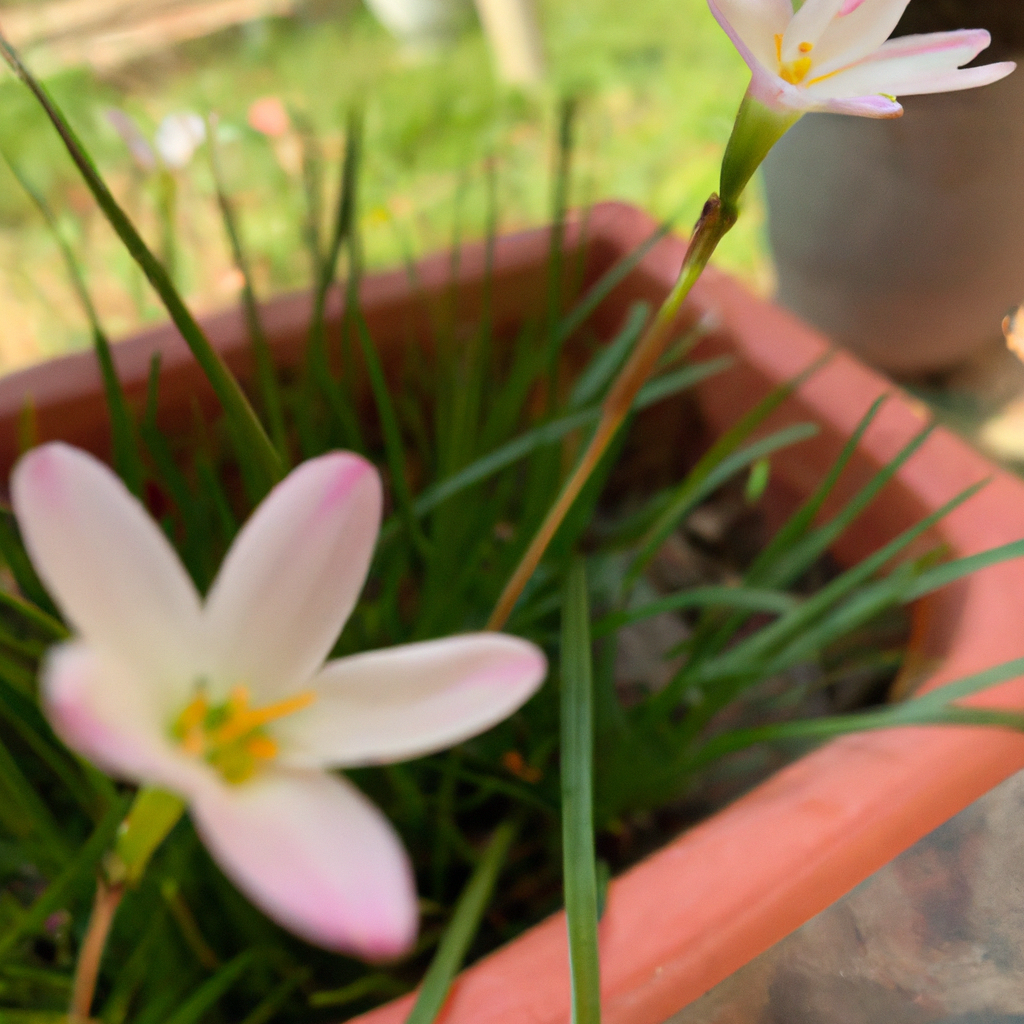Biological Name:
Zephyranthes spp. (Rain-Lily)
Natural Habitat:
Rain-Lilly is a plant with white, trumpet-shaped flowers that blooms in the spring or after rainfall. It is native to tropical regions and is often used as a decorative plant.
Description:
Rain-Lilly is a small perennial herb with slender stems and white bell-shaped flowers. It is commonly found in moist shaded areas.
Frequently Asked Questions (FAQs)
Q: Do rain lilies need full sun?
A: Plant your Rain Lilies in a location where the soil drains well and they will receive full sun. If you notice water puddles 5–6 hours after a hard rain, find another spot to plant.
Source
Q: Do rain lily bulbs multiply?
A: Plants in the ground should be dug after the first frost kills the leaves and then should be stored for the winter in slightly moist peat or vermiculite in a cool location. Rain lilies produce offsets from the original bulbs, multiplying readily.
Source
Q: Do rain lilies come back every year?
A: Native to dry regions, rain lily grows best in average to dry soil. Only water plants during extreme dry periods. Rain lily is hardy in Zones 7 through 10, where it will come back year-after-year. In cooler Zones, dig up bulbs before the first fall frost.
Source
Q: What month do rain lilies bloom?
A: April showers bring May flowers, and summer showers bring rain lilies. Rain lilies are small, flowering perennial bulbs that bloom three to five days after a rain shower in mid to late summer. Generally, they are not particularly noticeable in the garden until they suddenly burst into bloom.
Source
Q: What do you do with rain lilies in the winter?
A: To overwinter potted rain lilies, bring them indoors before the first frost. Keep them dry all winter with occasional watering until spring. If it’s planted on the ground, you should dig it and do a quick potting or put it on slightly moist peat or vermiculture and store it in a cool place.
Source
Q: How do you take care of rain lilies?
A: Sun exposure: rain lilies require full sun to bloom. Nitrogen: too much nitrogen in the soil may prevent blooming; avoid over-fertilizing. Drought: adequate moisture is needed for blooming. Cutting leaves: cutting foliage after flowering may affect next year’s blooming (resist cutting leaves until winter)
Source
Q: What makes rain lilies bloom?
A: Rain Lily, a perennial plant that grows from a bulb, is named for its tendency to bloom within a few days after a rainfall. There are about 70 species of Zephyranthes and Habranthus plants, or rain lily.
Source
Q: How long do rain lily blooms last?
A: Rain lilies are small, flowering perennial bulbs that bloom three to five days after a rain shower in mid to late summer.
Source
Q: Do rain lilies grow in shade?
A: Light. Choose an area in full sun to plant rain lilies. Some dappled shade or afternoon shade is usually tolerated, especially in hot climates.
Source
Q: Why is it called rain lily?
A: They get the name rain lilies because they tend to send up numerous flowers after a rain, especially in the drier parts of the country. Another similar bulb, the spider lily (Lycoris radiata) is often called hurricane lily, since it has a tendency to send up flowers after the drenching rains of a tropical storm.
Source
Q: Are rain lilies easy to grow?
A: Tips for growing rain lilies These bulbs are reliable and fairly easy to grow. To get the best results, they should be planted in sunny spots with well-draining soil in spring. Don’t plant the bulbs deeply; they are happiest just below the soil surface.
Source
Q: Do rain lilies attract bees?
A: It is an excellent choice for a night garden. Flowers are fragrant and attract bees and butterflies.
Source
Q: What do rain lilies smell like?
A: These beautiful pink Rain Lilies have a sweet, chocolate-like scent! Zephyranthus are Amaryllis relatives native to the Americas. Great outdoors in the south, excellent for indoor pots and plants. Tollerates any soil type.
Source
Q: Are rain lilies fragrant?
A: The flowers often appear a day or two after a rain. They are fragrant, white aging to pink and showy. Blooming occurs best in full sun but they can tolerate light shade.
Source
Q: How long does it take for rain lilies to grow?
A: they may even be placed under shrubbery in the garden for the period of time while they are germinating. Expect results between two and four weeks of planting.
Source
Q: Will rain lilies spread?
A: Once established, rain lilies will spread and multiply on their own, but they are not considered invasive.
Source
Q: Do you cut back rain lilies?
A: Rain lily doesn’t require pruning to thrive. If desired, you can trim back foliage after it has completely died back in the fall.
Source

